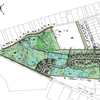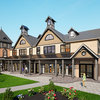Kids become detectives as they learn about the human body
GUILDERLAND — “It’s like we are trying to solve a mystery,” Drake Gilliam said of himself and his fifth-grade classmates at Guilderland Elementary School. “The answers don’t come from the teachers; they come from us. That is so cool.”
He told the school board Tuesday night how “one question leads to another” in the inquiry-based science program his school has been involved with for five years.
“Everybody in my class is like Sherlock Holmes,” said Drake, concluding, “That is why I love science.”
The school’s principal, Allan Lockwood, said that, when teachers first met to discuss the program, part of a National Science Foundation Grant, they asked, “If we don’t teach, how are they going to learn things?”
Now they scoff at the question, realizing students are self-motivated learners that the teachers can guide as needs arise.
The program was introduced to the school by Jianwei Zhang, a Guilderland parent who works at the University at Albany. He described inquiry-based science instruction as fostering lifelong learning and innovation where students learn by collaboration.
“Next-generation science standards,” Zhang said, involve deep understanding, not just recitation of facts, and also involve authentic scientific inquiry.
Students post what they’ve learned on a website so others can react to their findings. In the classroom, students and their teacher work together, focusing on “deep questions” posed by the students.
Students share ideas during “metacognitive meetings,” Zhang said as teachers turn their control over to students letting them decide what to learn.
The focus for fifth-grade science is the human body, said teacher Stacey Kirk. “The energy and excitement for learning has increased,” she said.
Some of the complex questions students have posed and then explored include, “Why do we need blood?” and, “How and why does our body digest food?”
“Answers to their questions do not lie on one page of a book or on a single website,” said Kirk. They have to search for answers, looking to a variety of sources and recording “their thinking and their theories” in notebooks.
Teacher Patricia Gagnon described “the online learning community” created on the website Knowledge Forum, or KF for short. Students access this through their Chromebooks, “posting their knowledge online for everyone in the class to read.”
Fifth-grader Leah Dannehy was exploring the question of how the brain controls the body when she learned about the four lobes of the brain. “I knew I had to share,” she said, and posted her note about the four lobes on the Knowledge Forum.
At the metacognitive meetings, Gagnon said, the topics are chosen by the students while “the teacher actively listens and takes notes but does not lead the conversation.” In this way, she said, students “learn they have to work diligently and together.”
When the fifth-graders are sharing incorrect information, Kirk said, “If we let them go for maybe one class period…they generally figure it out themselves.” Sometimes, in a “one-on-one” conference, the teacher will show a student a resource that gets him or her back on track, she said.
Students also share their knowledge through posters, demonstrations, songs, videos, slide shows and models, Kirk said. Much of the work started in class is completed at home, she said.
Makayla Mackey, one of Kirk’s students, displayed a three-dimensional poster she had created to illustrate the human digestive system. She described with knowledgeable confidence various parts of the system; for example, “the pancreas,” she said, “is a long flat gland… [that] makes enzymes.”
Another fifth-grader, Giuliana Vivenzio, spoke of trying to understand why people choke. “My theory was choking was to bring chunks of food that get stuck back up,” she said.
She concluded of learning through inquiry, “You just keep going and you just don’t stop because there is always more to learn.”
The teacher’s role with inquiry-based instruction, Gagnon explained, is to notice teachable moments, and to push students to think more deeply and to build theories. Teachers also highlight important discoveries, provide print and digital resources, and correct misconceptions.
“We learn right along with our students,” said Gagnon.
This method of learning, Kirk said, lets students become “fluid digital citizens” and “allows integration of all the learning skills.”
She concluded, “Students recognize everyone has knowledge to share.”


